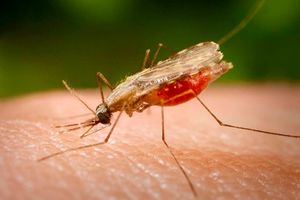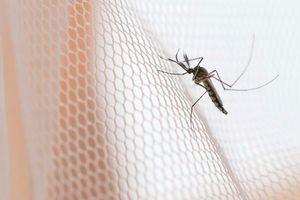Alert over new mosquito spreading malaria

A new mosquito variant is believed to be spreading malaria to non-endemic regions in the country.
What you need to know:
- The proliferation of Anopheles Stephensi is fuelled by climate change.
- WHO has advised countries to collaborate to eradicate the mosquito.
A new mosquito species with potential to drive new malaria cases in non-endemic malaria zones has been recorded in some parts of the country, the Health ministry has said.
In a parliamentary committee held on Tuesday, Health Cabinet Secretary Susan Nakhumicha said that the new mosquito variant — Anopheles stephensi — is thriving in urban and peri-urban regions and could claw back the gains made in the fight against malaria.
She told MPs that in January this year alone, the country has reported about 434 new malaria cases from non-endemic regions.
“There are plans for mass vaccinations,” said the CS. While she did not clarify who will targeted, Kenya is one of the countries that has rolled out malaria vaccination for children following the approval of the R21/Matrix M by the World Health Organization (WHO) in October last year.
Ms Nakhumicha told the committee that the new regions affected by malaria caused by the new mosquito strain had not been factored into the current financial year’s budget. “This new data will inform the next budgeting process,” she said.
Studies have shown that the proliferation of Anopheles Stephensi is fuelled by climate change.
In one of the papers published in the Biology Letters journal, scientists say that the mosquito has been moving away from the equator by 4.7 kilometres every year, to colder regions that previously recorded no malaria cases.
Dr Eric Ochomo, an entomologist working with the Kenya Medical Research Institute, told the Nation that Anopheles Stephensi has been in the country for over a year and was first detected in Marsabit County in December 2022.
“We know that the vector is invasive. It is not native to Africa but to Southeast Asia and the Arabian Peninsula.
In 2012, the vector first came to Africa via Djibouti. It then went to Ethiopia and Sudan in 2016. For Kenya, Nigeria, and Ghana, we had simultaneous detection,” he explained.
“Currently, the vectors we see breed mostly in rural settings, not urban areas. Anopheles Stephensi, on the other hand, tends to breed in containers, water tanks and drainage channels, to name just a few,” he added.
He said that while the vector mostly prefers to feed on animals, when they invade urban areas where there are more humans than animals, then there will be more malaria cases recorded.
A study conducted by Kenyan scientists published in the journal Research Square last year predicted that unplanned urbanisation is a likely culprit for spreading the vector in the country.
“With rapid, often unplanned urbanisation in Africa, many urban centres have poor refuse disposal and drainage systems, which are potential larval habitats of Anopheles stephensi. Coupled with climate change, which creates suitable climatic conditions for mosquito breeding, there is great potential for the spread and establishment of Anopheles Stephensi in African cities,” said the study.
WHO advises countries to increase collaboration, strengthen surveillance, improve information exchange, prioritise research, and develop guidance to keep the vector at bay.






